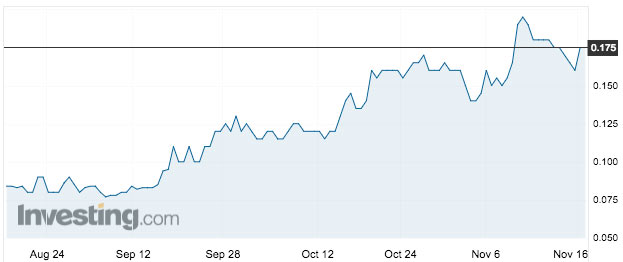Why Aussies like PolarX are heading to Alaska
Mining
Mining
Aussie juniors like PolarX are picking up prime exploration ground in Alaska without much competition from their Canadian peers, writes Barry FitzGerald in his weekly Garimpeiro column.
Australian mineral explorers are an intrepid bunch. They can be found in all corners of the globe trying their luck at making the big time.
A new hotspot of sorts for junior Aussie explorers is Alaska. There is good reason for swapping the heat of Western Australia’s outback for the frigid terrain of Alaska — the biggest but least populated US state.
Sure it’s -11 degrees in Anchorage today but that is no impediment to the world-class gold and base metal operations that can be found within a 500km northern arc of Alaska’s most populous city.
Kinross produces 400,000oz of gold at its low-grade Fort Knox operation while Sumitomo produces 270,00oz annually from its high-grade Pogo gold mine.
Kennecott got its start in the region back in the 1900s, mining 4.6m tonnes of copper at a fabulous 13 per cent grade. The Red Dog and Greens Creek base and precious metals mines also call the region home, as does the undeveloped monster Pebble copper-gold deposit.
Occasional angry bear
Operating 365 days a year is clearly not a big issue. That’s not to say the big chill and occasional angry bear or caribou don’t present particular problems. But it’s manageable.
The region is nevertheless somewhat remarkable for its lack of junior company activity.
That’s surprising because apart from the undoubted prospectivity, Canadian juniors are just as intrepid as their Aussie counterparts.
The good news is Aussie juniors are able to pick up prime exploration ground without much competition from their Canadian peers, and certainly not with the level of competition they would face in the over-crowded Australian exploration scene.
It’s why Alaska is hearing more Aussie accents to those that already make the long-haul to take in the spectacular Northern Lights.
Aussie juniors that have taken on the Alaskan challenge include White Rock Minerals (WRM) for zinc, RiversGold (RGL) for gold, and the newly named PolarX (PXX) for copper and gold.

Today’s interest is in PolarX (ASX:PXX).
There is a bit of a buzz around the stock (17.5c for a market capitalisation of $42m) on the strength of its Stellar copper-gold project area and the Caribou Dome copper project. Between them they bookend a 35km strike length of claims, about 350km north-east of Anchorage.
There are known high-grade but smallish deposits at Zackly (copper-gold) in the Stellar package of claims, and at Caribou Dome (copper).
But it is the unfolding potential for the known deposits to be part of much bigger mineralised systems, and the potential for big porphyry copper-gold systems at depth along the stretch of claims, that has piqued interest in the stock, from local, European, and Canadian investors alike.
Lab test results are expected shortly from a recently completed drilling program of the Zackly skarn.
The drilling program impressed with the return of thick zones of visible mineralisation and it is assumed by the punters that Zackly is on its way to establishing a JORC-compliant resource (there is a historical estimate of 1.5m tonnes at 2.9 per cent copper and 4.5g/tonne gold) which will grow over time.
JORC compliance refers to the mining industry’s code for reporting exploration results, mineral resources and ore reserves, managed by the Australasian Joint Ore Reserves Committee.
Copper system could be much bigger
The drilling also indicated the potential for a porphyry copper-system system at depth which could be very much bigger. The plan is to extend the near surface high-grade resource at Zackly, as well as evaluate the porphyry potential at depth in the 2018 field season (April-October).
The drilling program will also include drill testing of the Mars prospect, 6km from Zackly along a mineralised structural corridor.
Never before drilled, soil sampling at Mars returned coincident copper, gold, molybdenum and silver anomalism over an area of 2000m by 1500m. Rock-chip sampling turned up 7.4 per cent copper and 1.8g/tonne.
Geophysics in late August indicated a buried anomaly located 100‐150m below the surface geochemical anomalism. PolarX reckons that was all consistent with a buried, mineralised porphyry copper-gold system.
In essence, Mars ticks all the boxes.
It is now at the teasing stage where it looks really good but needs to be tested by some drill holes, once the big thaw sets in.